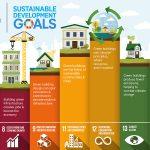Introduction to Sustainable Urban Construction The realm of sustainable urban construction extends far beyond the fundamental aspects of air quality. This article delves into the multifaceted approach needed for teaching sustainable construction, emphasizing the critical need for a more comprehensive understanding.
Understanding the Broad Scope Sustainable urban construction, including the use of temporary buildings, encompasses a wide range of practices and principles. At its core, it involves creating structures and urban spaces that not only minimize environmental impact but also enhance the quality of life for residents. This broad scope requires an interdisciplinary approach, blending aspects of engineering, architecture, urban planning, and environmental science.
The Pillars of Sustainability In teaching sustainable urban construction, we focus on three main pillars: environmental, social, and economic sustainability.
- Environmental Sustainability: This pillar involves practices that reduce environmental harm. These include energy efficiency, waste reduction, and the use of sustainable materials.
- Social Sustainability: It ensures that urban spaces cater to the health, comfort, and well-being of the community.
- Economic Sustainability: This aspect deals with the long-term economic viability of construction projects, ensuring they are cost-effective and beneficial to the broader economy.
Incorporating Air Quality Considerations While air quality is a critical component, it is only one facet of a larger picture. Teaching air quality involves understanding pollution sources, mitigation strategies, and the impact of construction materials and practices on the air we breathe. Moreover, students learn about regulations and standards that govern air quality in construction.
Practical Application and Innovation Hands-on experience remains key in teaching sustainable urban construction. Students engage in projects that challenge them to apply sustainable principles in real-world scenarios. Innovation is encouraged, fostering new ideas and solutions for urban sustainability challenges.
Technology in Sustainable Construction Advancements in technology play a pivotal role. From smart building materials to energy-efficient design software, technology provides tools that make sustainable construction more achievable and measurable. Teaching these technological aspects prepares students for a future where technology and sustainability are increasingly intertwined.
Policy and Regulatory Frameworks Understanding the policy and regulatory frameworks surrounding sustainable construction is crucial. Students learn about the laws and guidelines that shape sustainable construction practices. This knowledge is essential for compliance and for influencing future policy development.
Community Engagement and Education Sustainable urban construction goes beyond buildings; it involves communities. We teach students the importance of community engagement and education. They learn to design with community needs in mind and to educate the public about the benefits of sustainable practices.
Sustainability Assessment and Certification Teaching also includes sustainability assessment and certification processes like LEED and BREEAM. Students understand how these systems work and the importance of meeting these standards in their future professional practices.
Challenges and Future Directions The field of sustainable urban construction faces challenges, including resource limitations, regulatory hurdles, and resistance to change. We prepare students to navigate these challenges, encouraging them to think critically and creatively about future solutions.
Conclusion In conclusion, teaching sustainable urban construction requires a comprehensive approach that goes well beyond air quality. It involves a blend of theoretical knowledge, practical skills, and an understanding of the broader social, economic, and environmental impacts. By embracing this multifaceted approach, educators can prepare the next generation of construction professionals to build a more sustainable and livable urban future.


